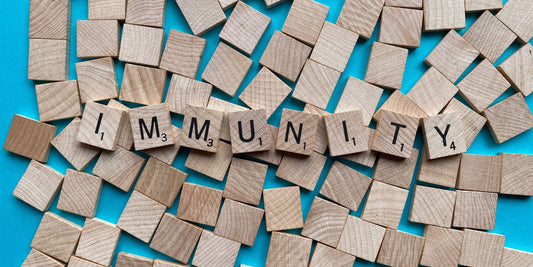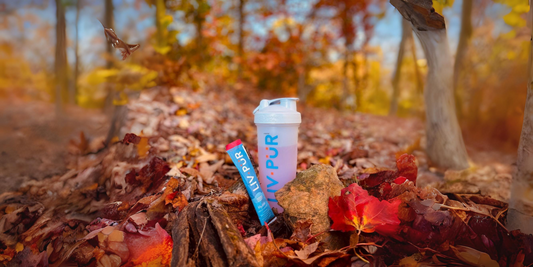Blood glucose levels – they impact everything from energy and mood to hormone production and organ function.
We create insulin to stabilize these levels. Even so, they still fluctuate depending on what we eat, how we’re sleeping, and many other factors. Adopting a lifestyle that supports stable sugar can improve our energy levels, athletic performance, and much more.
If you have or suspect you have consistently high blood sugar, known as hyperglycemia, see a doctor. This condition is associated with diabetes and requires professional diagnosis and treatment.
Otherwise, keep reading for the lowdown on healthy blood sugar levels, how to maintain them, and avoiding added sugar.
What is normal blood sugar?
Normal fasting blood sugar sits between 70 mg/dL and 100 mg/dL. Elevated levels between 100 mg/dL and 125 mg/dL may indicate prediabetes. However, this can often be managed with some lifestyle interventions.
Those with levels at or above 126 mg/dL may be diabetic. Other diseases as well as chronic stress, a recent surgery, or some medications can cause high blood sugar without diabetes.
What is a normal blood sugar level immediately after eating?
This will vary depending on the content and quantity of what you eat, but generally speaking, normal blood sugar levels will be 140 to 180 mg/dL within one hour of eating.
After two hours, blood sugar should dip below 140 mg/dL.
Your blood sugar levels will always be higher after eating. That’s why healthcare professionals measure them during fasting (approximately eight hours with no food).
How to Lower Blood Sugar: 4 Ways
Whether testing shows you’re in the prediabetic range or you just want to maintain good levels, here are the best ways to keep your sugar in check.
1. Mind your carbohydrates.
“Sugar” doesn’t just refer to the refined white stuff; we already know it isn’t great for our bodies. The carbs we eat become sugar, which we need for our energy stores. This raises your glucose and fuels your day.
So really, the question is: how much fuel do you need, and do you want it to be high quality?
Those with diabetes may be prescribed a low-carb diet, but for the rest, watch your intake and choose quality carb sources. After all, anywhere from 40% to 60% of our diets can be made up of carbohydrates.
Whole grains are better for blood glucose levels because they contain more fiber and nutrients. Here are some examples of refined, sugar-spiking carb sources and whole grains that feed healthy energy levels.
Limit refined carbs such as:
- White bread
- Cookies
- Pizza dough
- Pastries
- White rice
- Regular pasta
- Many cereals
Fuel your body with:
- Whole-grain bread
- Steel-cut oats
- Quinoa
- Chickpeas (including chickpea pasta)
- Brown rice
- Lentils
- Beans
Fruit, some nuts and seeds, and veggies like pumpkin and sweet potato are also great carb sources.
2. Get enough exercise.
Insulin is a hormone that controls blood sugar. Insulin sensitivity refers to the body’s ability to respond to the insulin we produce and clean up glucose levels accordingly.
People who get enough exercise have appropriate insulin sensitivity. Meanwhile, sedentary individuals might deal with insulin resistance, where the body doesn’t use or manage glucose the way it should, leading to higher glucose levels.
We all need about 150 minutes of moderate aerobic activity a week. That doesn’t sound like a lot (only 22 minutes a day!) but with today’s desk-and-device-centered workforce, a lot of us are having trouble making room for it.
Many experts advise getting up from your work every 30 minutes and walking around at a relatively brisk pace for five minutes. But if low sugar is a goal, aim for five 30-minute sessions of these moderate-intensity activities every week:
- Pilates
- Swimming
- Vinyasa yoga
- Cycling
- Dancing
- Heavy cleaning
- Gardening
- Tennis
If you like high-intensity exercise like running or hiking uphill, you can get by with 75 minutes a week.
3. Learn stress management techniques.
Stress releases hormones, and hormones can interfere with blood sugar. Exercise and diet are huge factors in mitigating the physical effects of stress, but it would help to pick up a new stress-busting trick or two, too.
Try mainstays such as meditation, progressive muscle relaxation, or gentle yoga. One might appeal to you more, but all are excellent for releasing tension and gaining present-moment awareness.
Some people respond better to problem-focused coping strategies. This is where you take real steps to reduce stressors in your life.
Problem-focused coping could include delegating excess tasks to other people, getting an event you’re dreading over with, or restructuring your to-do lists.
4. Hydrate.
If you’re not getting enough fluids, it affects the concentration of sugar in your bloodstream. The same is true if you drink too much water; it can dilute glucose to the point where you experience symptoms of low sugar.
How much water should you aim to drink a day? Some sources recommend that men drink 15.5 cups while women get 11.5 cups. You could also drink a half-ounce per pound of body weight.
Of course, if you’re performing strenuous activities, you might need more. LivPur Hydrate contains electrolytes, vitamins, and amino acids with just three grams of sugar per serving.
How many grams of sugar per day should I aim for?
When discussing how much sugar you can consume daily, we’re talking about added sugars, not naturally occurring sugars in whole foods.
Current guidelines suggest that individuals should get no more than 10% of their daily calories from sugar. If you’re not a calorie counter, try to limit sugars to 24 grams a day, which is about six teaspoons.
Is fruit too high in sugar?
Fruit is our best natural source of fiber, antioxidants, and nutrients. As long as you are consuming the whole fruit, there’s usually no reason to avoid it. The fiber in whole fruits prevents the blood sugar spikes we see from added sugars.
Avoid dried fruit, chewy fruit snacks, and juices with added sugar. Eat the whole apple instead!
How to avoid added sugar
First, become label-literate. In addition to looking at the number of grams on a list, check the ingredients. If a type of sugar is high on the list, there’s probably a lot of it in that product.
Also, look for words like “syrup” (corn syrup) and words ending in “-ose” (fructose, sucrose, dextrose, lactose, etc.).
Finally, check out our guide on how to quit sugar. You can read a little more about everything from tapering off added sugars to the sweetest alternatives.
LivPur is Low Sugar, Non-GMO, & NSF Certified for Sport®
Maintain healthy blood sugar now, and you may reduce your risk of long-term illness down the line. Much of it comes down to healthy habits – plenty of exercise, proper hydration, and stress management.
Most important of all are your dietary choices, from quality carbohydrate sources to cutting out added sugars. LivPur Nutrition offers low-sugar and sugar-free supplements
that support energy, recovery, immunity, and much more. Find out why we’re the choice of professional athletes and health-conscious people on the go just like you.




